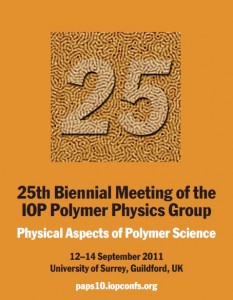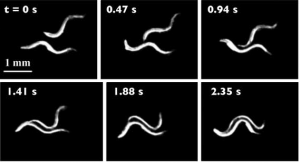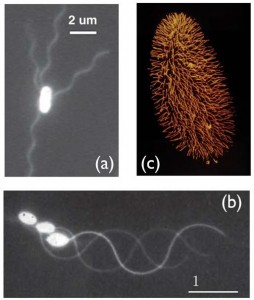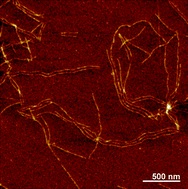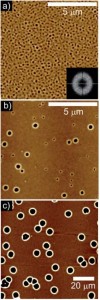
Rupture of thin polymer films
Molecular dynamics at nanometric length scales – Friedrich Kremer
Glassy dynamics and the glass transition temperature, in thin polymer films, has been a hotly debated area of polymer research over the last few decades. In particular, how and whether the glass transition temperature (Tg) changes from bulk values as the film thickness decreases or the molecular weight of the polymer is varied. A survey of the literature does little to clear this up with evidence being easily found for a lowering, a rise or no change in Tg as the film thickness is decreased. In his talk at the APS March meeting in Dallas, Friedrich Kremer discussed some of his recent work on polymer dynamics, with the aim of resolving some of the seemingly conflicting results found in the literature.
Kremer and his group used broadband dielectric spectroscopy (BDS), spectroscopic ellipsometry, x-ray reflectometry and differential scanning calorimetry to study thin polymer films (5-250 nm) with varying molecular weights. He noted that for the BDS measurements two different sample geometries were used. In the first evaporated aluminum electrodes (~80 nm) below and above the film were used as the counter electrodes. This is the common method used for BDS measurements. In the second geometry silicon wafers were used at the electrodes, with insulating silica nanostructures serving as spacers. This technique avoids evaporation of metal onto the films, allowing thinner films to be probed. Information on this technique can be found in Rev. Sci. Instrum.
In Kremer’s opinion sample preparation is the key to the conflicting results found in the literature. As such he was keen to stress that for all measurements his group performed, the samples were prepared in the same manner: Films were spin coated and then annealed at T = Tg + 50°C for 24hrs under vacuum in an oil-free environment. His results show that for films down to 5 nm in thickness and molecular weights varying from 300 – 8000 kg/mol, no change in the glassy dynamics is observed. No discrepancy between the different experimental techniques is seen, which all indicate that there is no shift in the glass transition temperature for thin films.
Kremer then went on to try to answer the questions of why he did not observe any change in the glassy dynamics while others do. The answer, he claims, can be found by carefully reading the experimental section of each paper. It all lies in how the films are prepared. Residual solvent can act as a plasticiser, while non-equilibrated films may have metastable states. Both of these result in altered dynamics. In the seminal paper on the polymer glass transition temperature by Keddie, Jones and Cory, they observe a decrease in of ~ 30°C in Tg as films thickness is reduced from 100 nm to 10nm. All films were annealed at 160°C for 48 hrs in vacuum – a temperature and time sufficient to remove residual solvent and relax stresses. However, experiments were conducted in air. According to Kremer, for PS at 150°C in air, chemical degradation occurs changing the molecular dynamics.
In other works, such as that of Dalnoki-Veress et al. and Ellison et al., annealing of the films after spin coating was insufficient to remove residual solvent, which would explain the molecular weight dependent behaviour and the altered dynamics observed. It should be mentioned that Kremer was keen to emphasise that he was not attacking any of these publications or their authors. He merely wanted to explain the reason for the divergence in results and show that films can be formed with no Tg shift. The results of Kremer and has group have been published in Macromolecules, EPJ Special topics and Macromolecules.
Kremer is not the only one to have recently shown that sample preparation is key when considering the properties of thin polymer films. The papers by Raegen et al. and Thomas et al. agree with his conclusions and show that if films are annealed for long enough above Tg, then any anomalous behaviour disappears and bulk dynamics are restored.
The glassy dynamics of thin polymer films is still a hot area of debate, but perhaps recent papers show that there is in fact no contradiction in the literature. It just comes down to sample preparation!
Related articles in Soft Matter
Rotella et al., Probing interfacial mobility profiles via the impact of nanoscopic confinement on the strength of the dynamic glass transition.
Boucher et al., Physical aging of polystyrene/gold nanocomposites and its relation to the calorimetric Tg depression.
Bäumchen et al., Can liquids slide? Linking stability and dynamics of thin liquid films to microscopic material properties.













